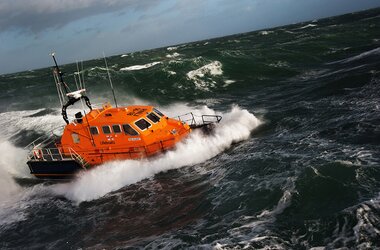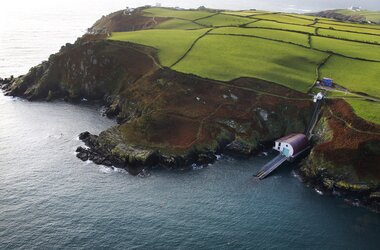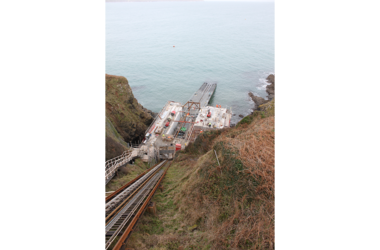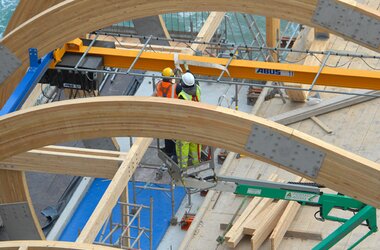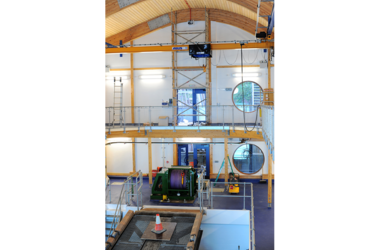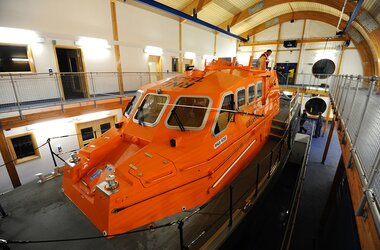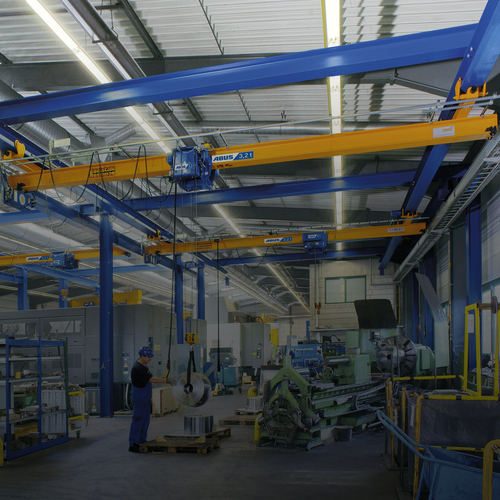ABUS cranes make a splash in coastal RNLI Lifeboat Stations
The Royal National Lifeboat Institution (RNLI) is a British & Irish charity whose lifeboat crews have saved over 139,000 lives at sea since 1824. Its volunteers provide a 24-hour maritime search and rescue service around the UK and Republic of Ireland, operating over 230 Lifeboat Stations and 300 lifeboats.
Charitable donations of £7.4 million (approx. 8.7 million Euro) have recently funded the rebuild of one of the most remote Lifeboat Stations at The Lizard – a peninsula which forms the most southerly point of mainland Britain. The sea lanes that pass this area are some of the busiest in the world along a coast which is particularly hazardous to shipping. Launches from this Station and its predecessors have saved over 1300 lives in the last 150 years, earning the crews 12 awards for gallantry.
The location of the Station rebuild - just off the remote coast at the foot of a 45-metre cliff brought its own challenges. In spite of the inaccessible location, the RNLI was not prepared to compromise on the Lifeboat Station design, and insisted upon an innovative, sustainable, energy efficient, low maintenance and durable facility.
One of the more innovative Station features is a water source heat pump, designed by the RNLI to take water from the sea to the boat house underfloor heating system. A further sustainable feature is the use of a timber framework, chosen for its construction efficiency and insulating properties. The copper roof of the facility will eventually turn green, to merge with it’s natural backdrop.
When considering energy efficiency, durability and sustainability, the choice of a state of the art ABUS overhead crane seemed natural. The underslung EDL crane with its Safe Working Load of 1000 kg and span of 8 m is the ideal solution thanks to the simple bolted connection of its track beams to the large wooden structure members, avoiding the need for any floor mounted support gantry steelwork. The crane which is equipped with a monorail wire rope hoist GM800 will be used for the maintenance of large items within the Boathouse including the Lifeboat itself and the winch which pulls the boat back out of the sea. The crane delivery and installation has been handled by ABUS’ UK based subsidiary – ABUS Crane Systems Ltd. (www.abuscranes.co.uk). ABUS has also recently supplied overhead cranes to a number of other RNLI Lifeboat Station rebuild and modernisation projects across the UK including Tenby, Padstow, Angle, Shoreham and Bembridge. Some of these installations proved just as challenging as in two of the cases, the overhead crane had to be delivered to the Boathouse by sea on a barge.
The brand-new all-weather Tamar Class lifeboat ′RNLB Rose′ launched from the new Station for its first rescue in late October 2011 continuing this part of Cornwall's exertions towards the proud record of the RNLI in rescuing the lives of the world's seafarers passing the coasts of Britain and Ireland. For more details of the RNLI, please see www.rnli.org.uk. Photographic credit to RNLI / Nigel Millard.

